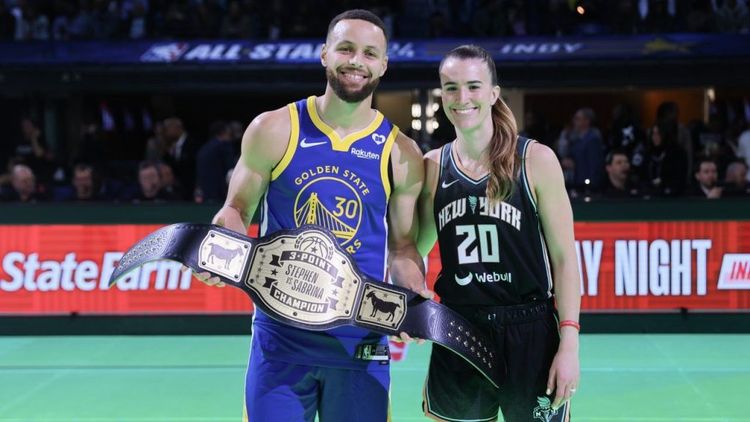WNBA Scoring Hasn't Increased Like in NBA. Here's Why

The WNBA set milestones in countless metrics this season, from total attendance, to social media engagement to TV viewership.
One area in which the W didn’t have a banner year, however, is scoring points. The league’s teams averaged 103.5 points per 100 possessions in 2024, not only down from last year’s 104.2, but also lower than the 103.8 average from 2016 and only a marginal increase over 100.2 a decade ago.
This is in stark contrast to the NBA, which set a record for offensive efficiency in 2023-24 for the fifth time in the past six seasons. During the same eight-year period in which the WNBA’s offensive rating has flatlined, the NBA’s jumped by nearly 10 points: from 106.4 to 115.3, per Basketball Reference.
The offensive explosion in the NBA is generally attributed to the rise in 3-point shooting—in 2013-14, only 26% of all field goal attempts were 3-pointers, whereas last season that rate was 40%. Teams are taking advantage of the simple fact that three is worth more than two, but better court spacing has also enabled more drives and cuts to the rim.
The WNBA has experienced a nearly equivalent 3-point revolution, as the percentage of shots coming from behind the arc increased from 21% to 34% over the past decade. Similar to the wave of skilled, young guards entering the NBA, the W has certainly had its own influx of talented shooters, from Sabrina Ionescu to Caitlin Clark.
So why the different offensive outcomes?
A decade ago, teams in both leagues were not attempting as many threes as they should have been given the relatively higher value of threes to twos. The numbers, however, show that the NBA had much more additional efficiency to be mined by shooting more threes than the W. In 2014, the average 2-pointer in the NBA yielded 0.98 points while the average 3-pointer yielded 1.08. In the WNBA, those numbers were 0.93 and 0.99—a much smaller difference, meaning that league was likely already closer to the optimal shot distribution than the NBA.
The other distinguishing factor is qualitative: Most NBA players can dunk, and most WNBA players cannot. The new era of long distance shooting and spacing in basketball has opened up the lane for slashers to drive and finish at the basket, since teams now station four or five players around the arc instead of having multiple bigs clogging the paint, as they often used to.
With defensive rim protectors pulled away from the hoop to defend the three, NBA players are taking advantage of having more room to operate by getting a head of steam and throwing it down. Dunks are up nearly 29% from a decade ago. Shooting percentage from 0-3 feet has skyrocketed from 64% to 70%.
Meanwhile, shooting percentage at the rim in the WNBA has only increased from 64% to 65% in that time span. It’s reasonable to assume that the lack of dunks puts a lower ceiling on rim finishing in the women’s game. In the NBA, many shots that would have been contested layups in 2014 are now dunks. In the WNBA, many shots that would have been contested layups in 2014 are now just slightly less contested layups.
Officiating differences could also contribute to these developments. The rate of shooting fouls called on shots inside the arc steadily climbed in the NBA between 2013 and 2023, a trend that has been met with a fair share of critics, among them Golden State Warriors’ head coach Steve Kerr, who felt that physical defense was being outlawed from the game.
The impact of referees on offensive production is clear—commissioner Adam Silver admitted that there was an adjustment in how games were called following the 2024 All-Star break, after which league-wide offensive rating declined by several points. The NBA’s prioritization of offensive players’ freedom of movement in the first several years of the 2020s likely led to improved finishing at the rim, and therefore a bump in overall offensive efficiency.
High scoring totals are not a prerequisite for fan interest. In fact, the WNBA is proving just the opposite. Sunday’s Game 2 between the New York Liberty and the Minnesota Lynx, two of the top three defensive teams in the league, finished with an 80-66 score and was the most-watched WNBA Finals game since 2001.









































